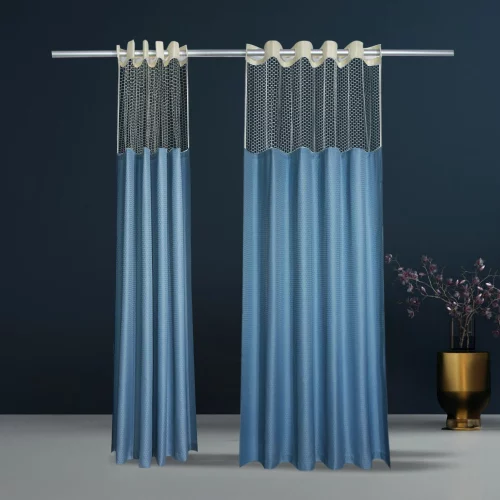ご連絡ください
お問い合わせいただきありがとうございます。ご要望について詳しく telください。専門チームが24時間以内にご返答いたします。
ご連絡ください
お問い合わせいただきありがとうございます。ご要望について詳しく telください。専門チームが24時間以内にご返答いたします。

難燃性繊維は、家庭や職場の安全確保において非常に重要です。こうした重要な繊維の使用が増加し、多くの人々からその有用性が認められていることが認識されています。火災発生時の負傷リスクを軽減するため、様々な場面で重要な役割を果たします。また、難燃性繊維は、多くの分野における安全基準の遵守にも役立ちます。.
難燃性は、安全基準を満たすために厳格な試験を必要とします。難燃性があるとされる化学物質や材料が業界基準を満たしていない場合、軍人用制服などの実際の用途では効果を発揮しません。 耐火性繊維 安全基準ベンチマークで構成される規格に従うことが求められます。例えば、EN ISO 11612およびEN ISO 14116は、材料の難燃性をベンチマークする評価規格です。これらの評価は、難燃性が機能するタイミングを特定するのに役立つため、材料メーカーにとって非常に重要です。しかし、一度評価に失敗すると、製品の信頼性が低いことを示す使用上の障壁となるため、非常に重要な意味を持ちます。.
難燃性繊維の製造と使用の両方において、承認された基準への準拠は不可欠です。繊維およびフィルム材料の耐火基準の試験に一般的に使用されるNFPA 701は、材料を炎にさらすことで、最も現実的な耐火効果を試験します。
溶接および関連プロセスで使用される保護服の条件は、ASTM F1506規格に規定されています。この規格は、着用者の手、頭、足を除く身体を熱および火災から保護することを目的とした保護服の性能要件を規定しています。この規格に準拠することで、繊維製品が性能要件を満たし、保護性能が向上することを保証できます。.
ISO 14116規格は、低熱曝露環境向けに開発され、特にこのレベルの熱から人を保護するために設計された繊維製品の耐炎性要件に基づいています。したがって、指定された基準を満たす耐炎繊維製品は、特定の規則の範囲内でどのように機能するかによって、日常の家庭用品から産業用安全服まで、幅広い用途において人を保護することが期待できます。.
私固有の難燃性繊維 難燃性は繊維自体に備わっており、繊維生産の初期段階から組み込まれています。この用語は、繊維の表面に化学的または物理的に結合しているものの、洗濯や長時間の着用によって難燃性を失う耐久性加工とは対照的です。こうした特性は、特定の難燃性を示す素材を含む他の素材と、本来の繊維とを区別するものです。本来の繊維は、その寿命全体にわたって機能し続けることを保証する能力を備えています。したがって、労働者と消費者に長期的な安全と安心を提供する素材は、本来の難燃性を備えた生地とみなされます。.
これらの繊維製品の化学組成に起因する固有の特性は、通常、使用者に着火性および燃焼性に対する追加の耐性を提供できるかどうかによって決まります。このリストに含まれる項目には、処理された合成繊維や天然繊維などの繊維製品が含まれます。この点に関して、ISO 6941:2003などの繊維製品およびその着火性に関する規格の要件に準拠した繊維製品は、特定の材料に関する情報を提供し、耐火性という点における固有の有効性を示しています。.
耐久性のある難燃性繊維と本質的に難燃性の繊維の主な違いの一つは、耐久性のある難燃剤は化学処理されているということです。つまり、繊維には難燃性を高めるために加工が施されています。これはまた、これらの加工は名前から想像されるほど永久的ではなく、洗濯や環境中での存在など、様々な条件によって時間の経過とともに劣化する可能性があることを意味します。とはいえ、素材が適切に維持されている限り、十分な難燃性を維持します。.
永久難燃性繊維は、厳格な処理工程を経ており、複数回の洗濯や現場での使用後でも耐火性を維持します。その結果、PFR繊維は炎と熱に対して高いレベルの保護性能を発揮します。.
高リスク産業で広く使用されている永久難燃性繊維の実証。これらの作業員は、長期間にわたり高い機能性を維持することを求めています。さらに、化学処理ではなく、本来の方法で製造されたこれらの繊維の難燃性が、特定の安全基準に詳述された厳密に計算された試験にどのように合格するかについても強調します。特に、英国安全規格6249は、高リスク区域向けにカスタマイズされた難燃性保護服の性能を分析しています。.

労働環境の改善
医療現場の作業環境は、高い安全基準が求められるだけでなく、スタッフと患者の衛生と快適性にも常に影響を与えます。そのため、衛生的で快適な難燃性ファブリックは、病院とクリニックの両方において、環境体験を大幅に改善することができます。BEGOODTEX 難燃剤 医学 製品は、低煙性、自己消火性、低発熱性といった特性に加え、NFPA701、BS5867、CAN/ULC-S109、DIN4102-B1などの国際規格に準拠しています。また、防水性と抗菌性を兼ね備えており、細菌感染や交差汚染のリスクを効果的に低減します。医療従事者と患者にとって、より安全で衛生的な革新的な選択肢を生み出します。
さらに、作業環境で使用する衣服に難燃性繊維を導入する理由は、現場で働く人々を危険から守るための特定の規制を遵守する必要があるためです。EN ISO 11612などの防護服に関する規格は、炎や高温にさらされる可能性のある作業員の制服に使用される繊維の仕様を定めています。したがって、従業員の衣服に難燃性繊維を使用する組織は、規制当局による厳しい処罰やそれに伴う賠償責任の増加を回避することができます。.
さらに、これらの規則を遵守することで、企業はネガティブな事例による評判の低下を回避することにも役立ちます。通常、従業員の安全確保に努め、耐火性繊維の使用を徹底する企業は、従業員を大切にし、適切な労働条件を提供しようとしている雇用主と見なされます。後者のアプローチを採用することで、直接的な結果として従業員の定着率が向上し、負傷や損害賠償請求に関連する費用(一般的には「裁判費用、検査費用、保釈金、弁護士費用」)が削減されます。これらの費用は、雇用主に有利な裁判で勝訴した場合に節約できます。.
難燃性繊維は、職場だけでなく、安全性が極めて重要な家庭環境においても、ますます有用かつ有益なものとなっています。実際、カーテン、室内装飾品、そして家具など、様々な製品の製造に広く利用されています。 寝具 他にも様々なものがあります。そのため、こうした素材は、家族が火災に伴うあらゆる問題を防ぐための追加の安全対策となるでしょう。例えば、炎の延焼を抑制できれば、物的損害を軽減し、生存の可能性を高めることができます。.
さらに、難燃性繊維は家庭内の防火対策にも役立ちます。特に、多くの家庭ではキッチンが調理の際の高温箇所となるため、難燃性のテーブルクロスやエプロンを使用することで、こぼれた液体やガスコンロの炎による発火を防ぐことができます。このように、難燃性繊維は家庭内でも幅広く活用されるべきです。.
さらに、難燃技術の発展により、ソファや椅子の装飾や保護のための様々な選択肢と見た目に違和感のない、美しい生地を選ぶことが可能になりました。一般的に、このような生地は様々な色や柄があり、手触りが良く、予測できない質感のものが多くあります。そのため、熱放出のリスクは低減しますが、居住者の利便性のために美観を犠牲にする必要はありません。結果として、家族は居住空間にさらなる保護層を加えることで、より快適な空間を創造することが可能になります。.
総じて、難燃性繊維の使用は、安全性の向上、安全基準への適合、そしてより高い性能を実現するため、職場環境と家庭環境の両方において非常に有益です。したがって、これらの繊維の詳細とその用途をより深く理解することで、それぞれの関係者にとって適切な選択が可能になります。.